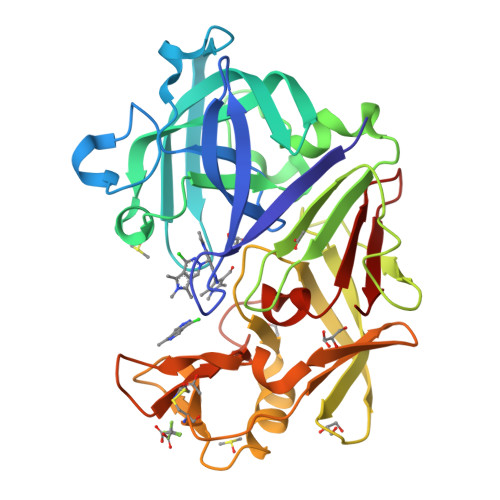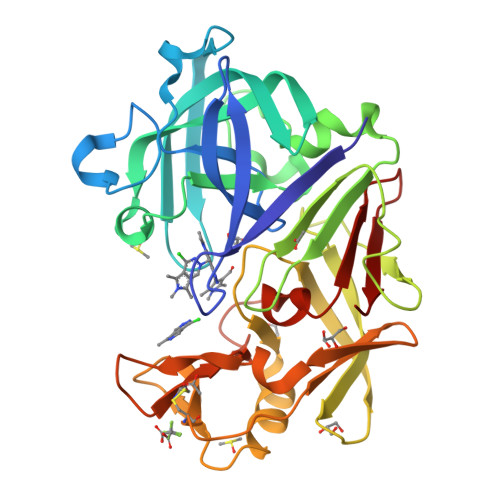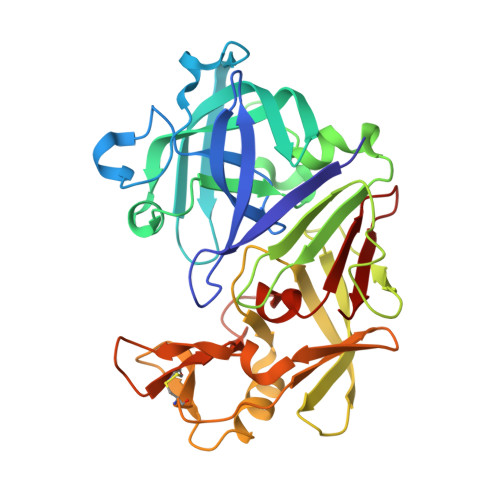A False-Positive Screening Hit in Fragment-Based Lead Discovery: Watch out for the Red Herring.
Cramer, J., Schiebel, J., Wulsdorf, T., Grohe, K., Najbauer, E.E., Ehrmann, F.R., Radeva, N., Zitzer, N., Linne, U., Linser, R., Heine, A., Klebe, G.(2017) Angew Chem Int Ed Engl 56: 1908-1913
- PubMed: 28097765
- DOI: https://doi.org/10.1002/anie.201609824
- Primary Citation of Related Structures:
5LWR, 5LWS, 5LWT, 5LWU - PubMed Abstract:
With the rising popularity of fragment-based approaches in drug development, more and more attention has to be devoted to the detection of false-positive screening results. In particular, the small size and low affinity of fragments drives screening techniques to their limit. The pursuit of a false-positive hit can cause significant loss of time and resources. Here, we present an instructive and intriguing investigation into the origin of misleading assay results for a fragment that emerged as the most potent binder for the aspartic protease endothiapepsin (EP) across multiple screening assays. This molecule shows its biological effect mainly after conversion into another entity through a reaction cascade that involves major rearrangements of its heterocyclic scaffold. The formed ligand binds EP through an induced-fit mechanism involving remarkable electrostatic interactions. Structural information in the initial screening proved to be crucial for the identification of this false-positive hit.
Organizational Affiliation:
Institut für Pharmazeutische Chemie, Philipps-Universität Marburg, Marbacher Weg 6, 35032, Marburg, Germany.
























